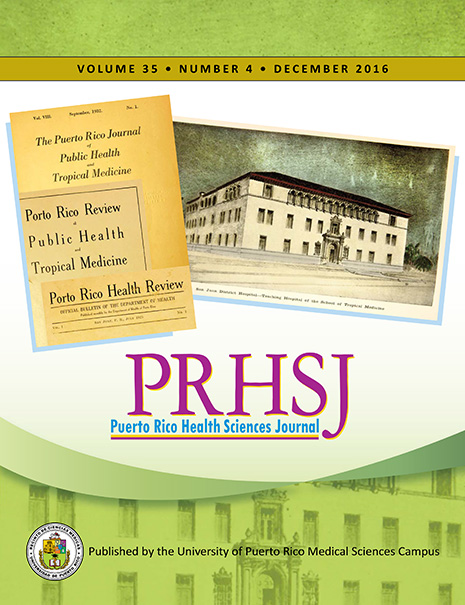Abstract
Objective: Helicobacter pylori is a bacterial pathogen associated with chronic gastritis, peptic ulcer disease, gastric adenocarcinoma, and gastric mucosa associated lymphoid tissue lymphoma. Current treatment guidelines support a 7- to 14-day, triple-drug protocol consisting of a proton-pump inhibitor (PPI), clarithromycin, and either amoxicillin or an imidazole. The initial eradication rates for this regimen were 80 to 90%. Nevertheless its effectiveness has declined as the antibiotic resistance to clarithromycin and metronidazole has emerged. In Puerto Rico the reported resistance of H. pylori to clarithromycin is 16% and to metronidazole, 3.7%. Sequential therapy for H. pylori eradication, 5 days of treatment with a PPI and amoxicillin followed by 5 days of treatment with the PPI and 2 other antibiotics (clarithromycin and an imidazole), was introduced as an effective alternate regimen. This is a prospective clinical trial intended to compare the efficacy of first-line, standard 10-day tripledrug therapy with those of both 10- and 14-day sequential therapy in eradicating H. pylori at the San Juan Veterans Affairs Hospital in a population that is naïve to previous treatment. Methods: This was a prospective, open-label, randomized clinical trial. Results: Based on the intention-to-treat analysis, the eradication rate was 83.7% (72 of 86 patients) in the standard triple-therapy group, 80.0% (68/85) in the 10- day sequential-therapy group, and 79.1% (68/86) in the 14-day sequential-therapy group. There were no significant statistical differences between the eradication rates among therapies. Conclusion: Sequential-therapy treatment regimens are not better than standard triple therapy for the eradication of H. pylori infection, regardless of the treatment duration.
Authors who publish with this journal agree to the following terms:
a. Authors retain copyright and grant the journal right of first publication with the work simultaneously licensed under a Creative Commons Attribution License that allows others to share the work with an acknowledgement of the work's authorship and initial publication in this journal.
b. Authors are able to enter into separate, additional contractual arrangements for the non-exclusive distribution of the journal's published version of the work (e.g., post it to an institutional repository or publish it in a book), with an acknowledgement of its initial publication in this journal.
c. Authors are permitted and encouraged to post their work online (e.g., in institutional repositories or on their website) prior to and during the submission process, as it can lead to productive exchanges, as well as earlier and greater citation of published work (See The Effect of Open Access).
